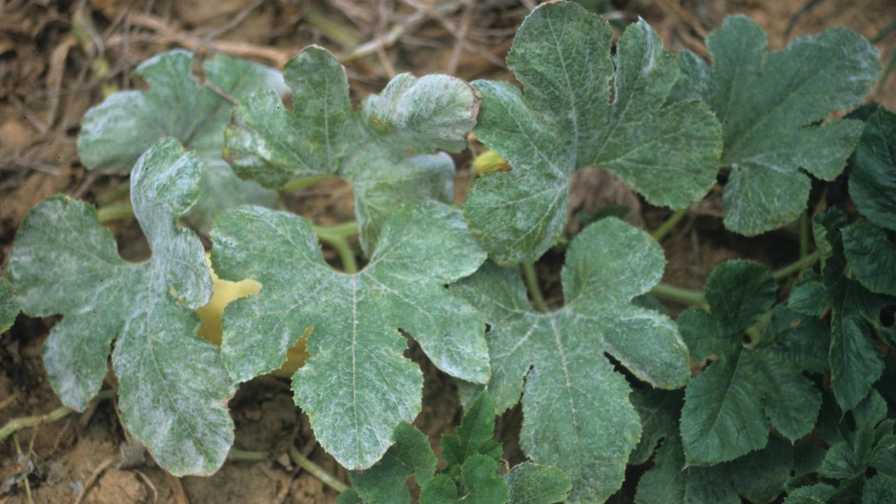Can Artificial Intelligence Help Quash Powdery Mildew in Squash?

The main symptoms of powdery mildew in squash are white spots or patches, usually on the leaves. These can be tricky to spot with the human eye. Growers might be getting some help in this area soon though from artificial intelligence. Photo by Gerald Holmes
Artificial intelligence continues to learn and grow in capability. We’re all using it in our daily lives more than you realize. Researchers at the University of Florida are finding out if the smart technology can help squash growers get the jump on powdery mildew, a notorious plant disease that reduces yields.
In a new study, scientists used a sensing system attached to drones to collect spectral data of powdery mildew on summer squash in the fields and labs of the UF/IFAS Southwest Florida Research and Education Center in Immokalee.
“The ideal environment for powdery mildew to infect is humid weather, high-density planting and shade,” said Yiannis Ampatzidis, a UF/IFAS Assistant Professor of Agricultural and Biological Engineering as well as co-author of the study recently published the journal Biosystems Engineering.
The main symptoms of powdery mildew are white spots or patches, usually on the leaves. Diagnosing powdery mildew in early infection stages is difficult because of symptoms on lower, more mature leaves that are often covered by other leaves.
According to Ampatzidis, UF/IFAS researchers used technology that does not rely on visual symptoms to detect powdery mildew. Human eyes can see only the light part of the electromagnetic spectrum. This technology can “see” more, he said. With that, researchers used this study to identify the best wavelengths for early powdery mildew detection — on leaves that either had no symptoms or exhibited early symptoms.
Researchers used machine learning — a subset of artificial intelligence — that can “learn” from spectral data to detect powdery mildew. The data came from drones and ground-based sensing systems. The trained machine-learning model identified powdery mildew in different disease development stages, Ampatzidis said. The machine-learning system builds a mathematical model to detect powdery mildew without being programmed by a human to follow specific steps.
With the images and spectral reflectance analysis of squash leaves, scientists detected powdery about 95% of the time. Even without visible symptoms of the disease, the technology showed researchers the disease 82% to 89% of the time.
“It is crucial to identify powdery mildew early, since the disease spreads rapidly and the lesions increase in size, developing a dusty white or gray coating,” Ampatzidis, said.
Data from studies like this can be a game changer in the quest to find diseases (plant or human) in the earliest stages.
“Early detection of any health problem, whether in human or plants, gives the best chance of controlling it through early intervention,” Pamela Roberts, UF/IFAS Plant Pathology Professor and study co-author, said. “Likewise, plant diseases are more easily controlled early when the pathogen population is low, compared to later in the epidemic.”









